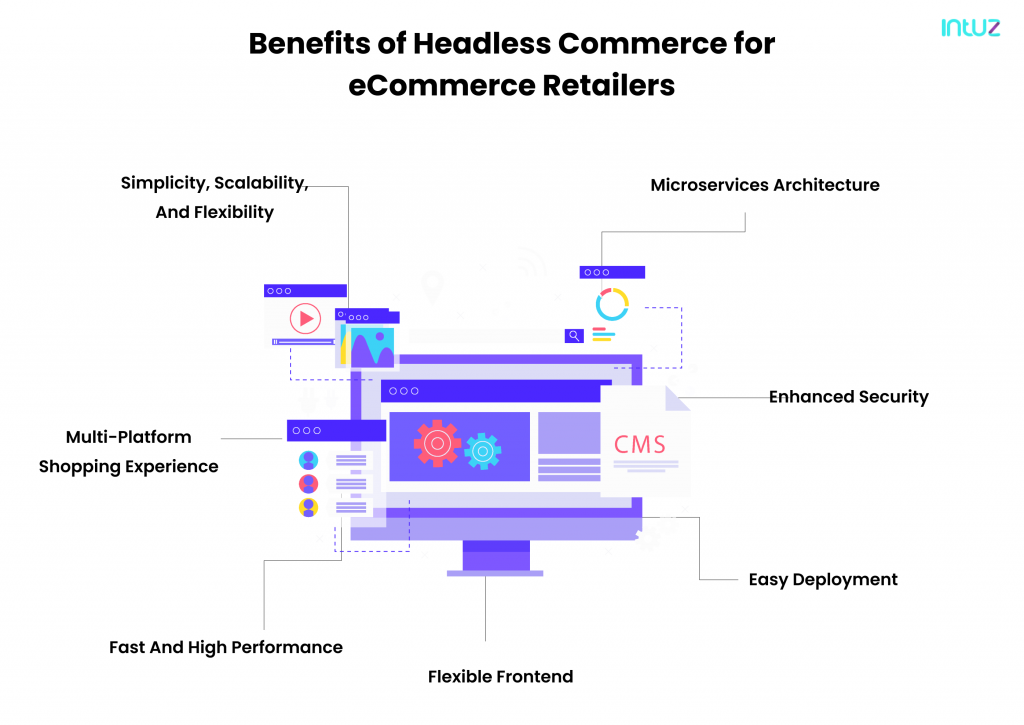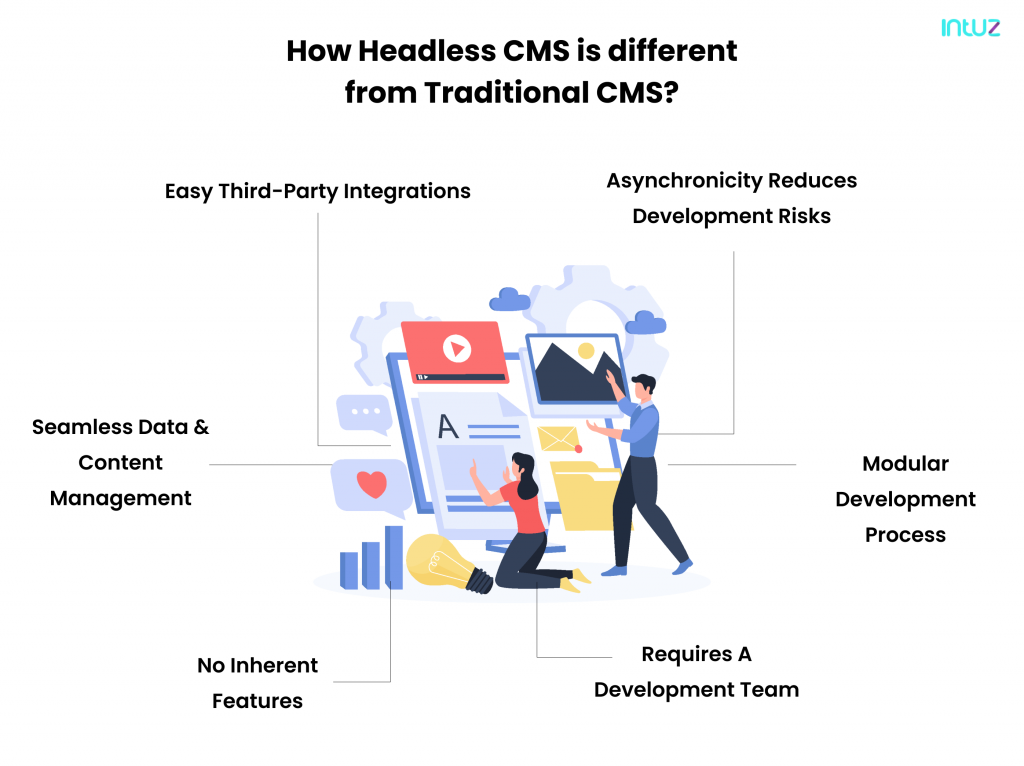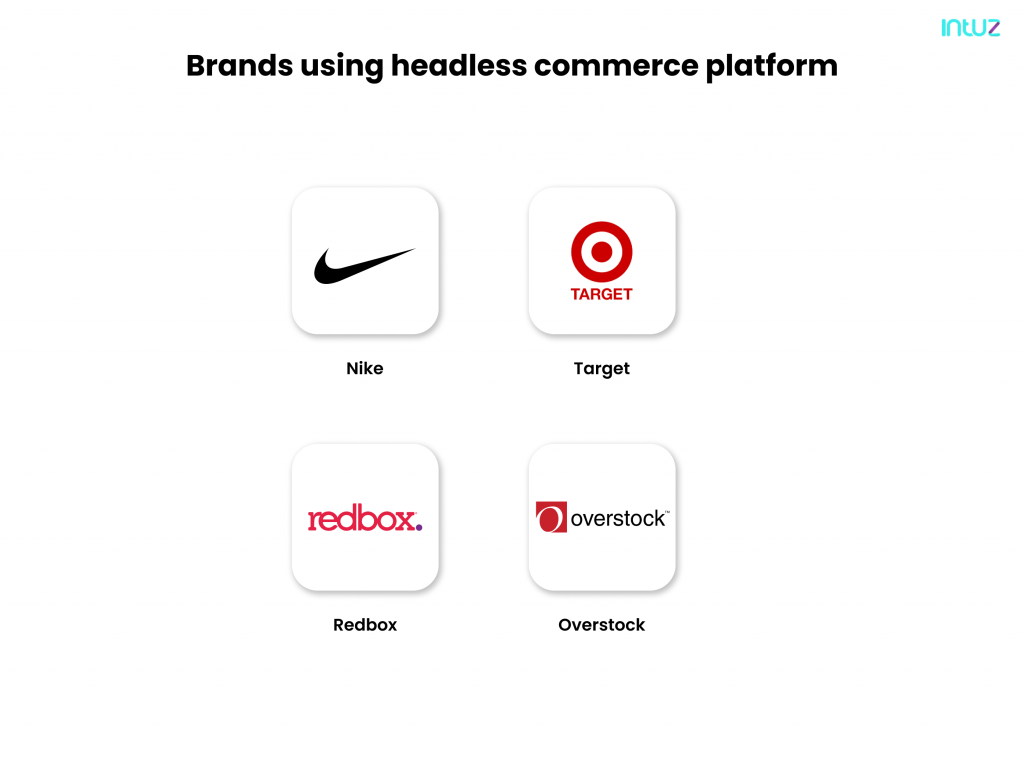Headless Commerce: An API-driven Approach To Digital Shopping
eCommerce is no longer monolithic like it used to be. From visiting only eCommerce websites, customers are now using diverse mediums and solutions to shop online. Mobile websites, dedicated apps, on-demand and aggregator solutions, hybrid websites, and even social media platforms. With so many activities happening outside traditional CMS and websites, businesses have to step up their game technically to ensure their business reaches their intended target audiences. To cater to the ever-branching eCommerce avenues arrived Headless CMS. When developers struggled to offer personalized experiences through coupled backend and front-end modules, headless architecture redefined conventions. It paved the way for developers to develop flexible portals and solutions that mold themselves based on visitors’ devices and mediums. This post will explore in detail what headless commerce is, its benefits, and some real-world examples of the web app architecture in action.
Let’s start.
Headless Commerce – What Is Headless CMS?
Every CMS has two modules – a frontend and a backend. While the former involves all user-centric elements such as UI, UX, design hierarchy, and more, the latter involves processing website or portal functionality. In a traditional CMS, both the modules are together as one.
However, in a headless CMS, both are decoupled. This means that the frontend can be changed, modified, updated, and completely rebuilt without rattling any underlying processes in backend modules (such as payment processing, checkouts, security, databases, and more). Thanks to this, developers can offer more flexibility to their portals and solutions and customize their functionalities to dynamic web traffic needs.
With this architecture, you no longer have to differentiate content and presentation for your social handles, display, or websites. You have extensive content that adapts itself to devices or mediums in the blink of an eye. All requests and retrievals of data and information are achieved through the integration of APIs.
How Is It Different From Traditional CMS?
There is a major difference between a traditional and a headless CMS rooted at the architectural level. To understand a traditional CMS, we need to go back a couple of decades. At that time, the internet was fresh and incredible websites, and eCommerce solutions were popping up. Computers were still a luxury for a major chunk of the population, making desktops (and laptops) the only mediums of accessing websites.
Because of this, the web architecture demanded the coupling or an association of the frontend and backend for optimized performances and results. This monolithic approach to designing websites and eCommerce platforms worked wonders during the yesteryears considering there were hardly any other ways to access content and businesses. However, this is not applicable today as newer gateways to reaching out to products and services pop up every day.
The Top Benefits Of Headless Commerce For eCommerce Retailers

Simplicity And Scalability
Headless architecture is ideal for enterprises or companies that are scaling up. For businesses having countless products and services in their inventory, compatibility with diverse languages, currencies, support features, and more, headless is perfect. It ensures the development team focuses on deploying robust backend modules. The marketing team works on a fresh and captivating frontend to lure and sustain customers on their solutions.
Multi-platform Shopping Experiences
Today’s consumers don’t have one way to shop for their preferred products and services. Most buying decisions are impulsive and boil down to how captivating marketing and promotions by companies are. In such cases, consumers want to instantly purchase something from the device they are using at that point. It could be a social media platform like Instagram, an eCommerce solution, an app, or even a messenger link.
With so many ways to reach a brand, the headless architecture ensures customers have a unanimous shopping experience regardless of how they reach a brand. This makes a brand have an omnichannel advantage and maintain consistencies in content, messaging, and branding.
Flexibility For Developers
This architecture paves the way for brands and businesses to pick an ideal platform to function as their eCommerce platform or engine as the frontend can be customized and pushed on a request basis. This allows developers to create customized eCommerce solutions for their clients and easily manage them from a dashboard.
Fast And High Performance
WIth headless CMS, businesses have this amazing liberty to test any new technology. This is because, in a traditional CMS model, developers are bound by a templated frontend. It restricts them to the thought process of how their websites would appear rather than how they would function. However, with headless CMS, all they have to focus on is the functionality of their websites or solutions. This paves the way for fast and high-performing websites in the market.
Headless Commerce – Microservices Architecture
This architecture involves several fragments of standalone modules working in tandem with each other. This means that every module functions by itself. The only limit is a specific task that it should accomplish. This eliminates the interferences from any unauthorized entries, break-ins, hacks, and more and modifying existing data.
Enhanced Security
Extending the essence of the previous point, let’s understand that the headless architecture is designed for optimum security. In conventional CMS, the architecture has such a design that any individual with the authorization key can access backend modules and modify elements. When the key rests with people who aren’t supposed to access the backend, it can give rise to tons of concerns like identity theft, breach of confidential data, damage to supply-chain networks, hacked integrated payment systems, and more. However, this is never the case with its headless counterpart.
Headless Commerce – Ease Of Deployment

Developing an airtight solution is not the end of the race. It has to deploy within a minimal time as well. This is specifically crucial when a new medium of accessing brands arrives. Companies have minimal time to market for the delivery of their products. With headless commerce, this is never a concern as developers can develop an ideal delivery network and push it through APIs for seamless deployment and access.
Flexible Frontend
One of the major advantages of headless architecture models is the flexible front-end or its absence (logically). Unbound by restrictions in coding, frameworks, and more, developers can seamlessly push products, services, content, UI, and any frontend system to diverse avenues and mediums across devices. This means headless architecture can support an IoT device, browsers, applications, and anything capable of rendering information.
Real-world Examples Of Headless Commerce

Nike
Nike’s intention to go mobile-first resulted in the company incorporating React SPA and Node.js. This initiative allowed Nike to garner visitors from its competitor websites and brands as well. This decided Nike to go headless, a massive success.
Headless Commerce of Target
Facing the heat from companies like Amazon and Walmart, Target realized that customer journeys for many of its buyers started in one device and ended in another. The brand saw this disconnect as an opportunity to capitalize on and deployed headless architecture on its website. This led to its customers having unified experiences regardless of their devices.
Redbox
For a website that is driven in terms of visual elements and graphics, for engagement, it only made sense that it opted for a SPA (Single Page Application) with headless architecture. Redbox relaunched its storefront only to offer more immersive experiences to its customers, responsive content, and higher performance.
Headless Commerce of Overstock
Overstock is an ideal example of headless CMS done right. It rebuilt its product browsing and research pages as SPAs and witnessed an 8% and 36% increase in conversions and revenue.
Headless Commerce – Wrapping Up
While this is the current scenario of headless CMS, the future looks all the more promising, specifically for digital retail segments. Virtual pop-up stores, accessibility of small and medium-sized businesses to headless architecture, B2B implementations, and more are on the cards for the future. With so much growth and progress, do you actually think headless CMS will be the new operating standard?




Leave a Reply